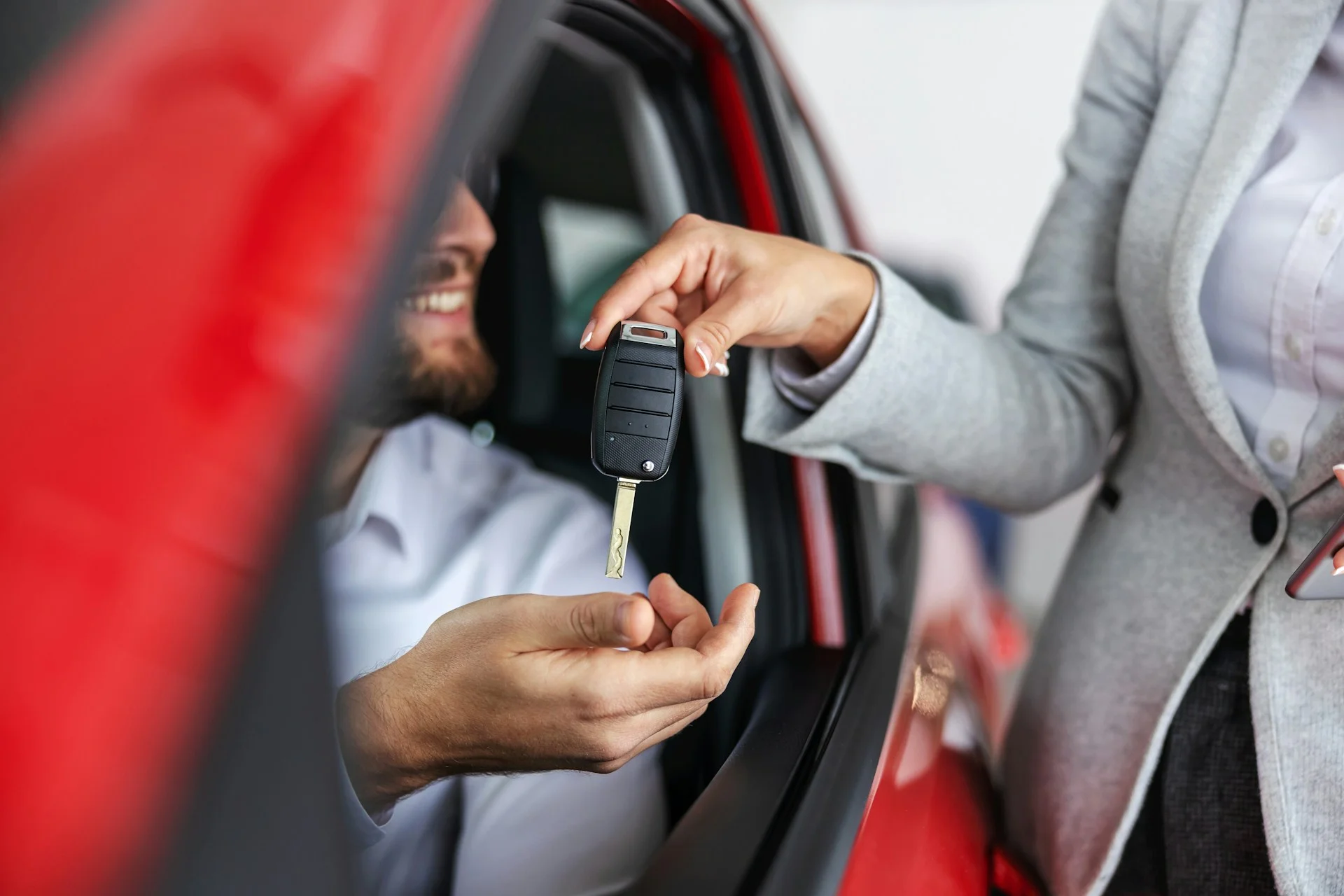When you purchase a new car, or even a secondhand car from a private buyer, the chances are that the seller will give you an overview of all the car’s bells and whistles. One thing that is skipped over, however, except pointing out where the owner’s manual is kept, is the glove box. And the truth is, that glove box is more important than you might realize. But what is the glove box for, and what should you have in it? This article will answer all of your glove-box-related questions.
Why cars have a glove box
While it’s probably not something that keeps you up at night—wondering about your glove box—it’s an essential accessory in your vehicle. And glove boxes, also called glove compartments, have been around since the beginning. For early cars, the glove box was located closer to the driver, generally in the center of the vehicle, on the floor near the driver.
The box was intended to store—you guessed it—gloves. Driving gloves, to be specific. Back then, many vehicles graced the road didn’t have a hard top. And that fast-moving air rushing by could create a chill, numbing the driver's hands while they were driving.
Today, glove boxes are still a critical yet often overlooked vehicle component. But just what should you keep in that glove compartment? Read on. We’ll tell you.
Important documents to keep in your glove compartment

There are a lot of opinions out there about what type of paperwork you should keep in your car. Some experts suggest keeping your insurance card, vehicle registration, and driver’s license in the glove box. But this is not necessarily the best guidance. And at RateWorks, we want our customers to stay safe on and off the road.
Despite what you might read elsewhere, do not leave your driver’s license in your car when it is unattended. Not only does your driver’s license provide your name and address, making it the perfect tool for someone looking to steal your identity. But it provides, just as we said before, your address, which means anyone who comes across it can not only attempt to steal your identity but also sniff out your home for a potential target for robbery.
This said, there are two crucial documents that we recommend you keep in your car:
- A copy of your car’s registration—Keeping a copy of your registration in the car is handy if you are ever pulled over and need proof of vehicle ownership. But to be clear, you should only keep a copy and not the original paperwork. Keep all original documentation, especially the vehicle’s title, at home in a safe (locked) place. And, for added safety, block out your address. Related to this, know how to find your car’s VIN (vehicle identification number). You can usually find it on your dashboard or the driver's side door or door jamb.
- A copy of your insurance card—Most insurance providers will give you two copies, provided they mail them to you. And if you need to download it from your insurance carrier’s website, just print an extra copy and tuck it safely into the glove box. This will ensure you have everything you need in the event of an unfortunate accident or if you need to provide proof of insurance for any other reason.
Items for emergency preparedness
Accidents happen, and just as they are named, they are accidents, which means we can’t predict them. But other things can happen that might require a specific tool. You might have a flat tire and need to find your way around in the dark. You might sustain an injury. You may even need to make a quick escape. Having the following items conveniently located in your glove box will go a long way in easing a potentially challenging situation.
The team at RateWorks recommends the following items for emergency preparedness:
- First aid kit—The American Red Cross recommends that your car first aid kit include items such as compress dressings, adhesive bandages, cloth tape, antibiotic ointment, antiseptic wipes, aspirin, non-latex gloves, hydrocortisone ointment, a cold compress, tweezers, and an oral thermometer, at the least. These items can come in handy if you are involved in a minor fender bender or if you need to offer assistance for some other type of on-the-road (or off-the-road) emergency.
- Hand sanitizer—These days, we can’t be too safe. With germs all around us and the threat of illness always lingering, hand sanitizer is a great alternative when washing our hands isn’t an immediate option.
- Flashlight—A small flashlight is a must-have in any glove box. If you get a flat tire when it’s dark out, you’ll need to be able to see when you make your way to safety (we don’t recommend that you change a tire in the dark, especially on a busy roadway). Flashlights can come in handy in a myriad of ways. Just be sure to replace the batteries periodically (replace them annually when you replace the batteries in your home’s smoke detectors) so that you are always prepared.
- Multitool—If you don’t have one of these gadgets in your car, now is the time to head to your local hardware store and get one. These tools provide a handy way to tighten nuts and bolts and help you make a minor repair when needed.
- Hat and gloves—Emergencies can happen when we least expect them. Even a short drive on a winter’s night can turn dangerous if your car dies, you are in an accident, etc., and you are unprepared. As part of your winter emergency car kit, keep a spare hat and extra pair of gloves in your glove box or center console. And even better, keep a warm blanket in the trunk or underneath one of the back seats.
Personal safety

While almost all of the items on your recommended list could fall under the category of personal safety, these three items are most critical.
- Seatbelt cutter—The idea of getting into an accident, or worse, an accident that involves a body of water, is chilling, to say the least. And we’ve all seen the movies where a driver becomes stuck behind the seatbelt, unable to get out. But the truth is that while seat belts are made to keep us safe, they can pose a threat if they become immobilized or trapped. A seatbelt cutter can be a lifesaver, literally, in harrowing situations.
- Whistle or small air horn—If you’re in an accident or if you are in a threatening situation by another person, a whistle or small air horn can help draw positive attention your way. Blow on the whistle as hard as possible to alert others that you need assistance.
- Antibacterial wipes—Similar to keeping hand sanitizer in the car, antibacterial wipes can come in handy too. Wipe down the vehicle in the event of spills or clean up if a passenger has become ill.
Roadside assistance essentials
Finally, there are a few more items to keep in the car in case an emergency strikes. And some of these items are just good to have around.
- Tire gauge—Insufficient air pressure in tires can lead to accelerated and uneven wear, increased fuel consumption, and adverse effects on the vehicle's braking and handling performance. To ensure optimal tire conditions, it is recommended to use a tire-pressure gauge and check the tire pressure at least once a month and before embarking on extended journeys.
- Pen(cil) and paper—While most of us carry mobile devices, keeping a pencil or pen and a small notebook in the glove compartment is never a bad idea. You may need to make a note of an event you witnessed or capture the information from another driver involved in a fender bender.
- Jumper cables—While jumper cables won’t fit in your glove compartment and should be stored in your car's trunk or back compartment, we’d be remiss to leave them out as a roadside essential. Always have your own set of jumper cables in your car. If your car dies and a stranger offers to assist, always keep your car keys with you, and get your cables out of the car for use. Never accompany another driver to the back of their car.
Organization and tidyness tips
Keeping a clean and well-organized vehicle is a safety must. Not only does a clean car help protect its value, but it is also less distracting when you are on the road. We all know how life can get crazy busy sometimes, and clutter seems to find its way into our cars. But a cluttered car is a recipe for danger for you and anyone riding along with you. It ups the risks of distractions.
Further, random stuff lying around can lead to nasty accidents. A kid’s toy, extra chapsticks, cups, etc., can roll around on the car floor. And in the worst of situations, they can get pegged under the accelerator or the brake pedal.
Also, a dirty car interior can be a breeding ground for germs and bacteria. These little guys can wreak havoc, causing food poisoning, skin problems, or even messing with your immune system. To keep your car's insides squeaky clean, it's a good idea to clean it at least once a month.
Even better, we recommend that you clean out your car of any extra items each time you are done driving for the day. This helps prevent the accumulation of cups, wrappers, and other waste. Another great idea is to keep small trash bags and an organizer in the vehicle. This can make it easy to find items such as a phone charger, pen and paper (if you don’t keep them in the glove box), etc. Keeping your car neat and clean will keep you safer on more focused on the road. And it’ll help deter thieves from breaking into your car to steal whatever you have lying around.
Maintenance and regular checks
Just like we all need visits to the doctor and the dentist regularly to keep us happy and healthy, our cars need similar attention. In between maintenance checks with a reputable car dealer or service shop, pay attention to the following:
- Change the oil in your car approximately every 7,500 miles (or per your vehicle’s specifications)
- Replace the windshield wipers about every 12 months
- Check your tire treads at least once per month, per the National Highway Traffic Safety Administration
- Pay attention to ensure headlights and tail lights are properly functioning (and replace them immediately if they are not)
- Replace brake pads and shoes about every 35,000 miles (perhaps less if you drive infrequently)
- Make it a habit to give your windshield washer fluid reservoir a once-over every month. If you drive through rainstorms or bug-infested areas often, you might need to top up the fluid more frequently
- Check the items in your glove compartment (and center console) to see if anything needs to be updated, refreshed, or replaced
Paying attention to the above items can help keep you and your passengers safer on the road.
Your glove box is for more than just convenience
Your glove compartment is more than just a storage space in your car. It's a treasure trove of car essentials, important documents, and emergency preparedness items. Remember to keep a well-stocked first aid kit for personal safety and convenience items like a tire pressure gauge and multi-tool for roadside assistance. Remember to stay organized by following some handy organization tips, driving tips, and conducting regular maintenance checks. By having the right car supplies and ensuring vehicle organization, you're enhancing convenience and prioritizing car safety. So, keep that glove box ready for anything the road throws your way! For more tips on cars, from driving safety to auto refinancing, read more on the RateWorks insights blog.


.webp)









